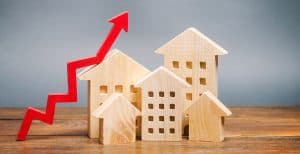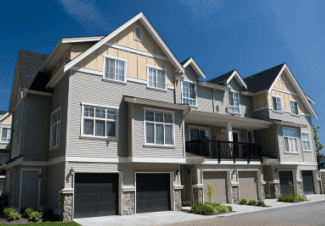Texas Multifamily Turnaround Called ‘Major’

The apartment outlook has changed from “catastrophic” when the virus began, to “positive” today, said Luis Torres, a research economist for the Center, which is affiliated with Texas A&M University in College Station.
The Loan Star State apartment market has been the beneficiary of several factors, not the least of which is the lack of houses for sale, especially those priced below $300,000.
“Households priced out of the single-family market continue to rent,” Torres pointed out.
In Austin, the occupancy rate among all properties has risen to 91.6 percent, according to the recently released Texas Quarterly Apartment Report. The rate is higher for Class A properties in the state capital, at 92.1 percent, according to the research center. But it is even higher in San Antonio—92.2 percent overall and 93.2 percent for Class A projects.
In the Dallas-Ft. Worth and Houston regions, meanwhile, Class A isn’t doing quite as well as the market overall—90.9 percent vs. 92.6 percent in DFW and 91.4 percent vs. 90.4 percent in Houston.
At the same time, all properties in all four major Texas markets have seen asking rents rise significantly. The largest jump was recorded in Austin—13.5 percent for all classes of properties and 16.8 percent for Class A projects. San Antonio and Dallas also nailed double-digit increases at Class A properties—12 percent and 11.6 percent, respectively.
“Sharp price increases are not limited to the single-family purchase market,” the report found. “They’re also occurring in the apartment rental market.”
Every other MSA in Texas also registered positive year-over-year gains in both occupancy and rents, with the exception of Midland, Odessa and San Angelo. Midland and Odessa actually saw rent growth run negative.
NATIONAL COMPARISON
The research center’s quarterly study squares with the latest National Multifamily Report from Yardi Matrix. In July, apartment rents in the top 30 markets increased “an extraordinary” 8.3 percent year-over-year to $1,510 on average, with Austin and DFW above that “eye-popping” average and Houston below it. (The Yardi report does not ascribe percentages to individual markets.)
For lifestyle properties, Yardi Matrix put the average nationally at 9.5 percent, with Austin and DFW above it and Houston below it. And for rent-by-necessity assets, the average was 7 percent, with Austin above and Dallas and Houston below.
By contrast, Phoenix led the nation in July in all three categories—a whopping year-over-year rent increase of 18.9 percent for all asset classes, more than 20 percent in the lifestyle column and more than a 13 percent gain in the necessity bracket.
Meanwhile, Torres said demographics, the federal unemployment stimulus and increasing vaccination rates also played a part in the market’s ride back to health.
“Texas’ population is young,” he said. “People are moving here from out of state. Affordable housing in is short supply. It’s a recipe for a stronger apartment market.”
He also noted that stimulus money served as a bridge for the unemployed, and that rising vaccinations have helped keep the economy open. But with the end of the ban on evictions, the economist expects repossessions to increase—but not to a ruinous level, either for cash-strapped residents or property owners.
“Unfortunately,” Torres said, “some households will be forced to change living arrangements. However, the majority of renters are better off thanks to the overall labor market recovery and government transfers.”
In its survey, the research center found that nearly a third of residents who were behind on their rents had either no confidence or only the slightest belief they could make their next month’s payment. That’s far greater than the national number. Worse, almost two-thirds of those said they believed eviction was imminent.
Looking forward, the researcher believes the apartment market in Texas will remain healthy for the remainder of this year and into 2022.
THE CENTER’S FORECAST FOR VACANCY RATES OVERALL:
- Austin: 8.6 percent this year, 8.2 percent in 2022, 7.9 percent in 2023
- DFW: 7.8 percent this year, 7.6 percent in 2022, 7.8 percent in 2023
- Houston: 8.6 percent this year, 8.3 percent in 2022, 8.4 percent in 2023
- San Antonio: 8 percent this year, 7.9 percent in 2022, 8 percent in 2023
But Torres warned that the Delta variant of COVID-19 “could prolong” a complete recovery. “Until the virus is beaten,” he said, “a full recovery cannot be secured.”
Source: Multihousingnews.com















 Accessibility
Accessibility